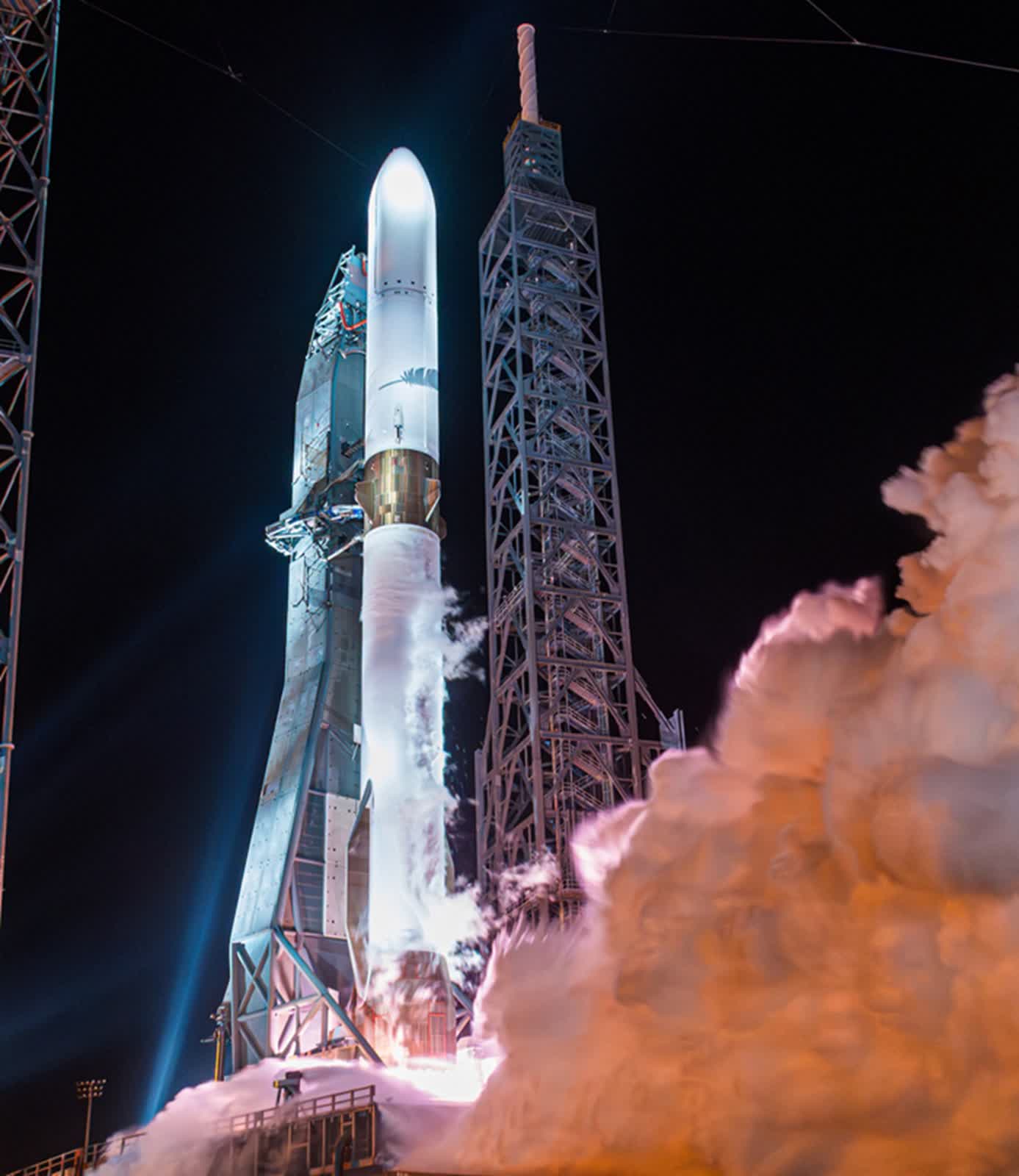TL;DR: In the early hours of January 16, 2025, Blue Origin’s long-anticipated New Glenn rocket embarked on its maiden flight, marking a pivotal moment for the company founded by Jeff Bezos nearly 25 years ago. The launch occurred at 2:03 a.m. ET from Cape Canaveral Space Force Station. As the countdown reached zero, the New Glenn’s seven BE-4 engines ignited with a thunderous roar, illuminating the launch pad in a dazzling display of blue flame.
The Saturn V-sized rocket appeared to hesitate at liftoff, its thrust-to-weight ratio barely exceeding 1.0. Yet, moments later, it began a deliberate ascent into the cloudy night sky, gradually accelerating as it burned through its methane and oxygen propellants.
The flight path remained precise, with the first stage performing flawlessly for over three minutes before separating at an altitude of 70 km. The second stage seamlessly took over, its two BE-3U engines igniting to propel the payload toward orbit. After nearly 10 minutes of sustained burn, the upper stage reached orbital velocity, officially making Blue Origin the latest member of the exclusive club of private companies capable of achieving orbit.
Blue Origin CEO Dave Limp celebrated the achievement on X, stating, “We did it! Orbital. Great night for Team Blue. On to spring and trying again on the landing.”
We did it! Orbital. Great night for Team Blue. On to spring and trying again on the landing. (Here is another view!) pic.twitter.com/3AZGfkXQvB
– Dave Limp (@davill) January 16, 2025
While the primary mission objective was successfully achieved, Blue Origin’s attempt to land the first-stage booster on the drone ship Jacklyn – named after Jeff Bezos’ mother – did not go as planned. During the descent, the rocket’s telemetry and video feed froze, leaving its fate uncertain.
Limp later confirmed, “We may very well have lost the booster,” adding, “We knew landing our booster on the first try was an ambitious goal. We’ll learn a lot from today and try again at our next launch this spring.”
The loss of the booster, though disappointing, was not entirely unexpected. Industry experts were quick to remind the public that even SpaceX, the current leader in reusable rocketry, needed 19 launches before successfully landing an orbital booster.
New Glenn’s maiden flight carried the Blue Ring Pathfinder, a versatile space tug designed to host and deploy multiple satellites. After two burns of the upper stage engines, the Pathfinder was successfully placed in an elliptical orbit, with a high point of around 12,000 miles and a low point of about 1,500 miles.
Equipped with 144-foot roll-out solar arrays and 13 ports for both hosted and deployable payloads, the spacecraft will undergo a series of tests to assess its performance in space.

Meanwhile, the company already has a backlog of satellites awaiting launch on New Glenn rockets. With plans to compete across various sectors, such as national security payloads and Amazon’s Project Kuiper satellite constellation, Blue Origin is positioning itself as a key player in the rapidly expanding space industry.
